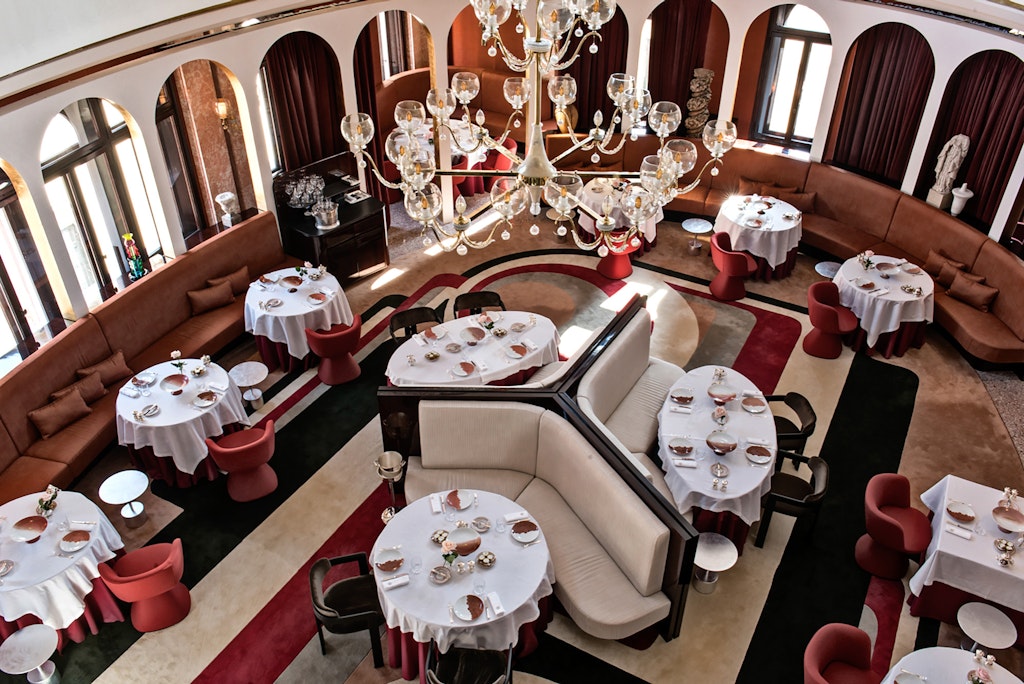In the pink
The world’s best-value rosé
Last summer I conducted an extremely scientific test to ascertain which were the best rosé wines currently available in Britain. This involved getting dozens of samples, from supermarket own labels to some quite smart wines from Provence. Then I invited the neighbours round and we drank them in the garden.
The winner wasn’t a celeb-endorsed yacht rosé, instead it came from a small estate called Château la Canorgue in Luberon, a part of the Southern Rhone famed, if famed is the right word, for its bulk red wines.
It certainly wasn’t the cheapest wine we tried, currently around £18 from Yapp Bros, but seeing as you can now easily spend upwards of £20 on something quite ordinary in a fancy bottle, nor is it that expensive.
I’ve been writing about wine more or less professionally for over a decade, and every year Château la Canorgue rosé is one of my favourites. I am going to go out on a limb here and say that, from a quality per pound perspective, it’s the best rosé in the world.
You might not know the name but you will recognise the château itself because it featured in A Good Year — Ridley Scott’s adaptation of Peter Mayle’s novel, starring Russell Crowe. You can see why it appealed to Scott because the buildings and the surrounding countryside look like the very model of a Provençal idyll. It’s a gorgeous-looking film and Crowe is surprisingly watchable in a romantic comedy.
I first came across the wines from Château la Canorgue in the house — mansion really — of a TV producer friend of my wife’s in Los Angeles. The giant fridge was stuffed with bottles of the stuff and I remember being impressed that the house’s owner, who could afford anything, was drinking a $20 wine. Perhaps she guzzled Petrus when George Clooney came over.
There does, however, seem to be some sort of peculiar affinity between Canorgue and show business. There’s an episode of Absolutely Fabulous where Patsy and Eddie have a Withnail and I-esque holiday in the South of France.
There’s no light, food or power but there is plenty of local wine which they proceed to tear into with abandon. If you look carefully at the labels you’ll see that they aren’t just drinking any old plonk, it’s Château la Canorgue.
So what is this wine the media types can’t keep away from? The estate had been in the Margan family for five generations, but it hadn’t produced any wine for years when Jean-Pierre Margan and his wife took over in the early 1970s. She was a nurse and he was in insurance, but he had a diploma in winemaking and had previously worked in the industry.
They wanted to do something a bit different, farming organically, something that caused a few waves at the time in a bulk wine region.
the rosé, so often an afterthought for other vineyards, is the top of tree
They planted the traditional vines of the Rhone valley — grenache, cinsault, mourvèdre, syrah and carignan for red and rosé, and roussanne, marsanne, clairette and bourboulenc for the whites. The first vintage was 1977, but they really made people sit up and take notice when their 1979 red took a gold medal at Concours Agricole de Paris.
The wines were nothing like what their neighours were making. According to Margan’s daughter, Nathalie, who now runs the property with her father, “My father has always been a big fan of freshness and fruit aromas in the wines. We have never done woody wines or very tannic wines.”
Nowadays, they pick some of the grapes at night to preserve that freshness. And you can really tell: the reds are delightfully fruity and perfumed and only 13.5 per cent alcohol, the whites have a rosemary and lemon-peel quality about them.
But the rosé, so often an afterthought for other vineyards, is the top of tree. It’s made mainly from syrah and grenache with some mourvèdre and cinsault, and its flavour, alive with strawberries, peaches and herbs, belies its pale colour.
In recent years, there’s been something of an arms race among vineyards to produce the lightest possible rosé with some wines looking and tasting more like white wines. But according to Nathalie, Canorgue has always been very pale.
She said, “In the eighties and nineties our rosé wine was rejected Appellation d’Origine Contrôlée status because it was too light! Now we are one of the darkest-coloured rosés in Luberon … so you can imagine how light the others are.”
Nathalie’s wines sell on their quality, not on a moderately funny film from 18 years ago. In fact, A Good Year has proved something of a mixed blessing for the family. Nearly two decades later, she still has to deal with “a lot of crazy fans just coming because they want to take a picture and show on Instagram or Facebook that they were here”.
She continued: “People do not understand it is a real house, where real people live, they think it is a movie museum or an amusement park, and this is the problem. Most of them do not care about wine or about the history of the winery, they just have silly questions about the movie.”
So do Nathalie a favour — the best way to visit Canorgue is in the bottle.
This article is taken from the August-September 2023 issue of The Critic. To get the full magazine why not subscribe? Right now we’re offering five issues for just £10.
Enjoying The Critic online? It's even better in print
Try five issues of Britain’s newest magazine for £10
Subscribe














